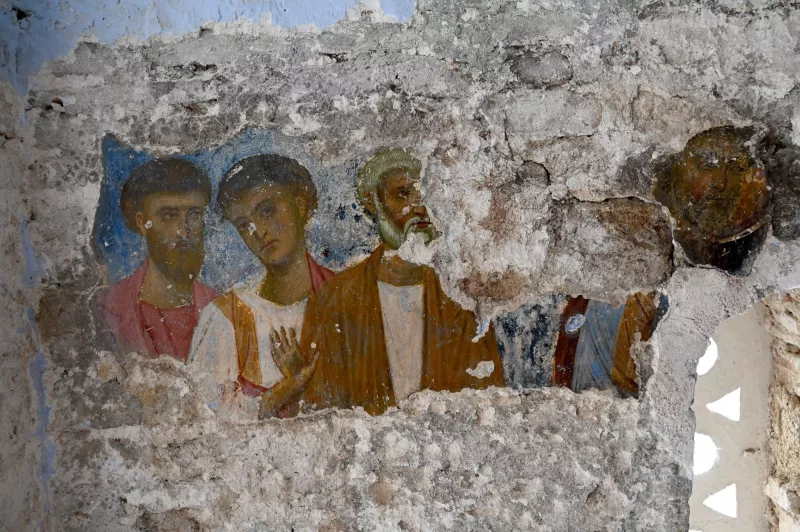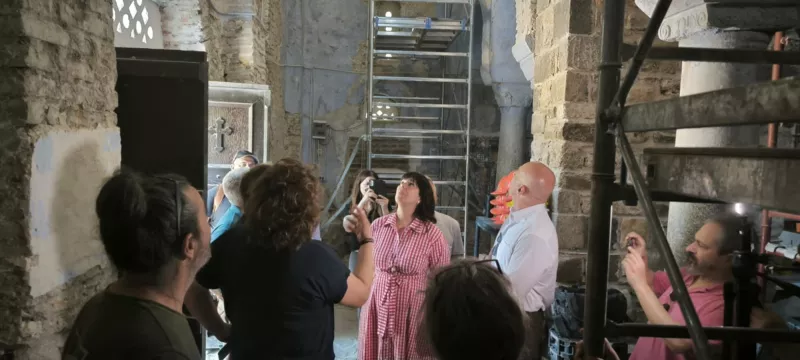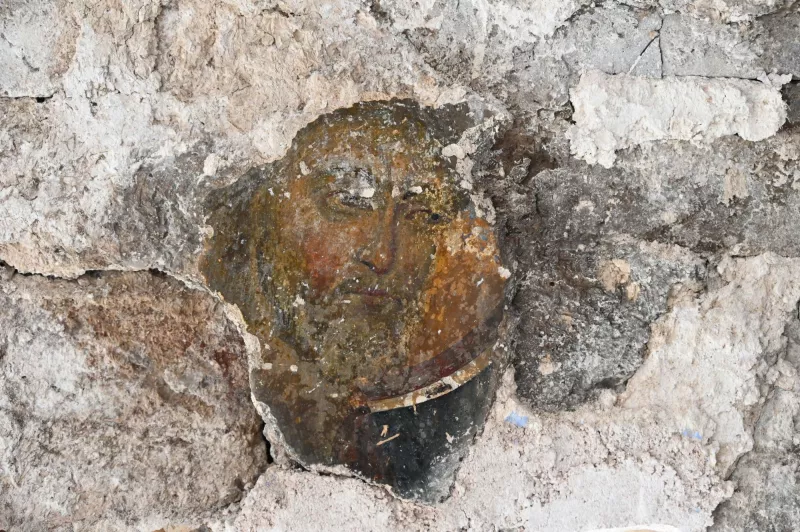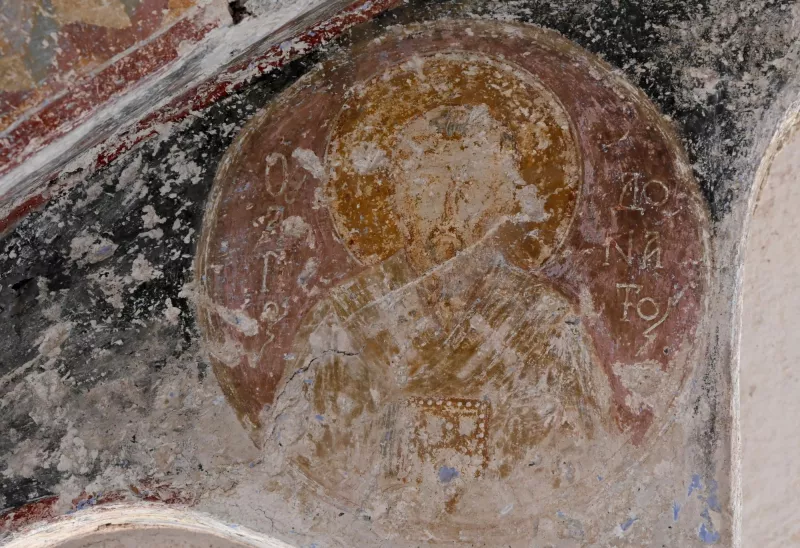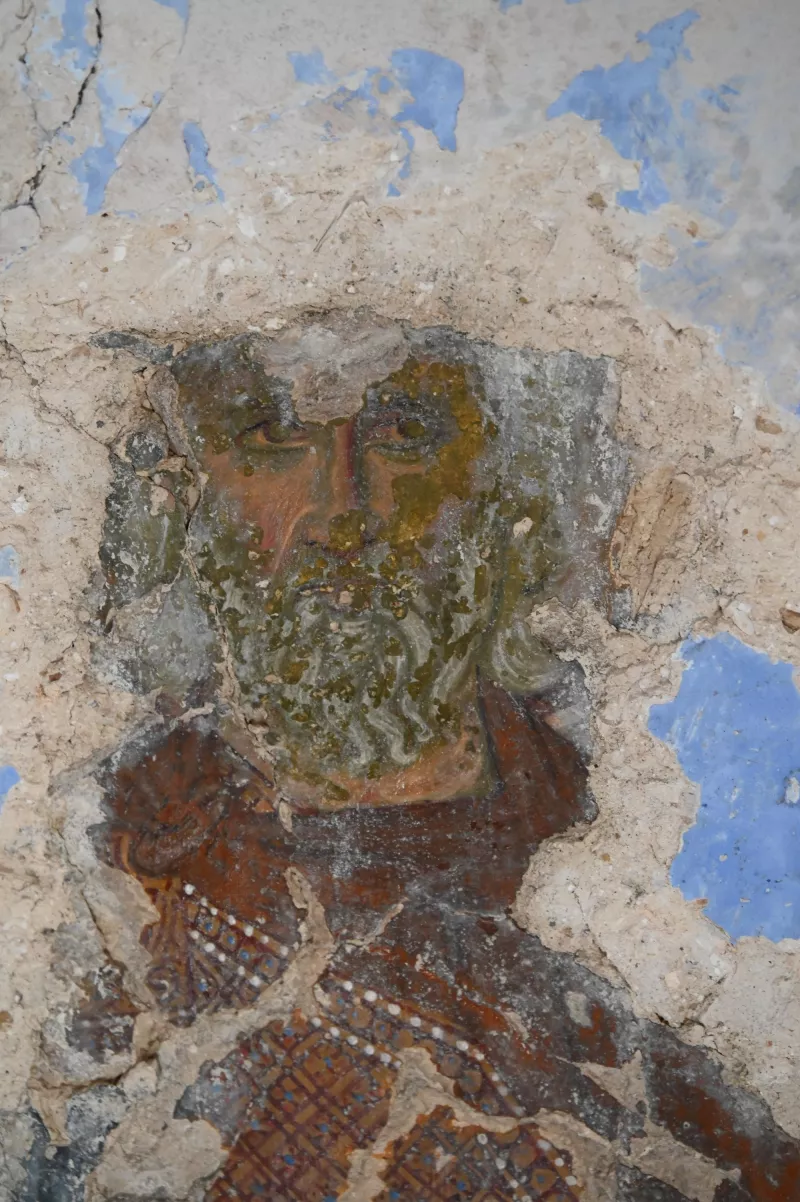Intactic frescoes were recently surprised by the archaeologists and conservationists of the European Center of Byzantine and Post -Byzantine Monuments, under the white walls of the church of St. Nicholas, in Mesopotamos of Albania, village of North.
In front of their eyes, forms of saints, painted in vibrant colors, eight meters high, which seems to have contributed decisively to maintaining for hundreds of years.
Their enthusiasm was very great as the frescoes were Unknown to the monument’s research so far And, as the director of the Flora Karagiannis Center says, “this is not often the case.”
According to the first indications, the colors used for the frescoes were created by plants – as pigments then did not exist – while they were very expensive, which creates assumptions that a major man of the time funded the painting of the temple.
“We usually know the frescoes and preserve them. Having white walls and under them suddenly appearing forms and faces is great joy and revelation. This didn’t happen elsewhere. In the other monuments we maintain outside Greece the frescoes are always known, we just go there and do cleanings, fasteners. We lived this joy of revelation in the church of St. Nicholas very strongly, “he adds, speaking to RES-EIA.
The church saved by Hoxha
According to Civil Engineering Leonidas Pappas, who has done a postgraduate studies in monument restorations while being president of “Omonia” for some years, representing the Greeks in Albania, tradition says that the monastery of St. Nicholas in Mesopotamos was built in Mesopotamos.
During the power of Albanian leader Enver Hoxha, which lasted forty years, all the buildings of the monastery were destroyed and only the Church remained as a monument of culture.
It was eventually one of the 350 churches that were rescued when religion was banned by law, so they were not demolished or surrendered to use to farmers as warehouses of cereals and other products.
Maintenance work at St. Nicholas Temple
Concerning the work, Mr Pappas reports that some time ago work was done by the Institute of Monuments of the Albanian Ministry of Culture.
The second phase of work was followed by the European Center for Byzantine Monuments (based in Thessaloniki) concerning the preservation of the decoration, namely the hagiographies and some sculptures inside the monument.
He notes that probably a major man of the time financed the painting of the temple as the colors in the frescoes are vegetable and then they were very expensive.
The second phase of the work was implemented in the context of a Memorandum of Cooperation signed in 2021 by the President of the Center, Emeritus Professor of Byzantine Archeology Natalia Poulos with then Albanian Minister of Culture Elma Margariti and funded by the Greek Ministry of Culture.
The maintenance work of the frescoes is scheduled to continue and be completed in 2026, while at all stages of the project there was collaboration with the Center with the Albanian Institute of Monuments, the assistance of the Municipality of Phoenicians on practical issues, and supporting the project by the Greek Embassy.
The work of the European Center of Byzantine and Post -Byzantine Monuments
Speaking about the work of the European Center of Byzantine and Post -Byzantine monuments outside Greece, Ms. Karagiannis states: “The center, for about 28 years, implements Byzantine monuments rehabilitation programs outside Greece. All these years it has maintained numerous monuments in the Balkans, the Middle East, Turkey, in the Black Sea. In this context, Memorandums of Cooperation are signed with the Ministries of Culture or the Churches, depending on where the monuments are located, and in the context of the Memorandums, with money from the Greek Ministry of Culture, these projects are implemented to highlight and maintain them. “
From the works that have been done all these years, the mosaic floors of the impressive Early Christian Basilica of Prophet Elias, now maintained in Jordan, in the Middle East, have the frescoes maintained in Northern Macedonia, the woodcuts. “Every case is unique,” he says.
Source :Skai
I am Frederick Tuttle, who works in 247 News Agency as an author and mostly cover entertainment news. I have worked in this industry for 10 years and have gained a lot of experience. I am a very hard worker and always strive to get the best out of my work. I am also very passionate about my work and always try to keep up with the latest news and trends.


